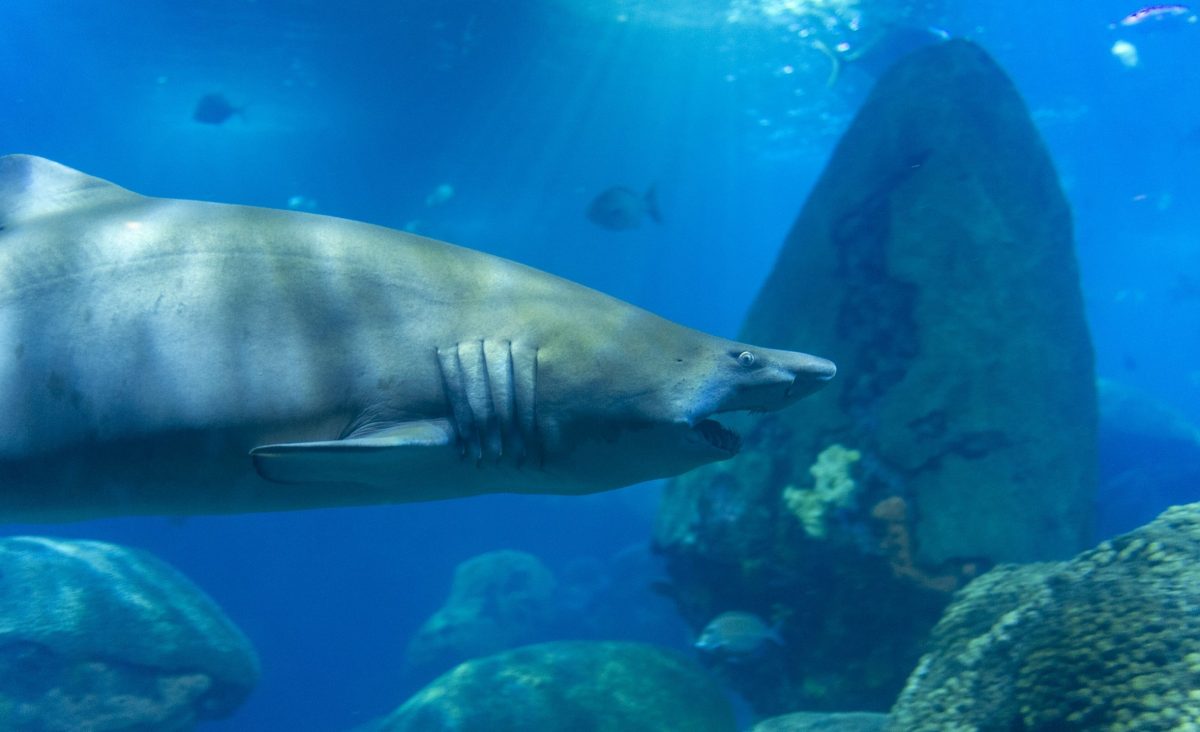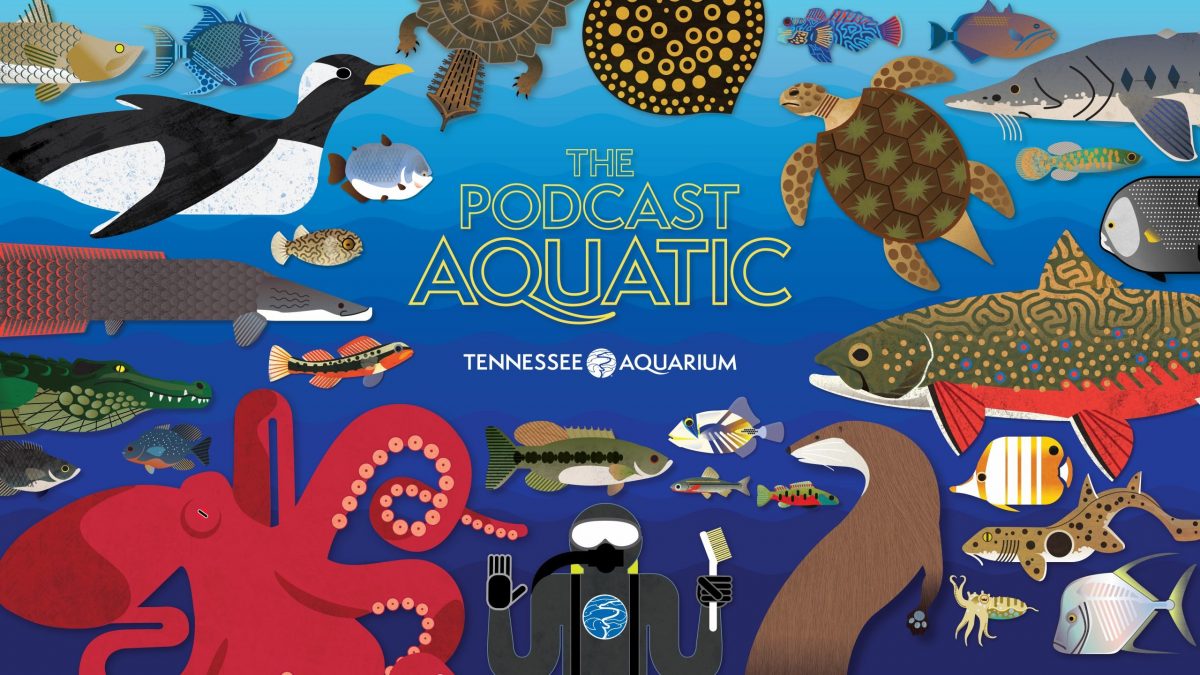Earlier this week, a male Sand Tiger Shark was seen swimming near the surface of the Secret Reef exhibit at an unusual angle. Later in the day, divers found the same shark lying immobile and minimally responsive at the bottom of the exhibit.
A team of aquarists carefully moved the shark into a nearby acclimation pool for further observation. The Aquarium’s care specialists had been closely monitoring this individual for months due to changes in diet and behavior typically seen in animals as they age.
The Sand Tiger came to the Aquarium in 2004, the year before the opening of the Ocean Journey building. At the time, this shark was fully mature, and aquarists place his age upon arrival at about 12 years.
With an estimated age of 30-31 years, this Sand Tiger far exceeded the median life expectancy of his species in human care, which typically ranges from 13-16 years, based on statistics from the Association of Zoos and Aquariums.
“With older animals, you’re guided by the principle of, ‘What would this animal want? What would they need? What can they have in their life to be happy and go through their list of things they have to do every day?’” says Staff Veterinarian Dr. Chris Keller. “And if they can’t do that any longer, then we have to take steps to alleviate any suffering.”

Fig. 1 A Sand Tiger Shark swims through the Secret Reef exhibit. Also known as a Grey Nurse Shark, this species was listed as critically endangered by the International Union for Conservation of Nature in 2020.
For months, the Sand Tiger’s weight had been steadily declining, and his behavior had become noticeably lethargic. After isolating and assessing his condition more closely, the decision was made to perform humane euthanization using an intravenous solution.
“When he was found in the state he was in this morning, we did what we felt was the best course of action and eased his pain,” Dr. Keller says. “He was probably about twice as old as he would’ve been had he had to fare for himself in a wild setting.”
An initial veterinary diagnosis, pending confirmation from the results of a pathological analysis, indicates the shark had impaired kidney function, commonly known as “renal failure.”
“In fish, in people, in dogs and cats that we work on, over time, that really high pressure valuable organ that essentially detoxifies your bloodstream on a regular basis stops working as effectively,” Dr. Keller says. “When that happens, those toxins accumulate to a point where it’s not compatible with living well.”


Fig. 2 Guests observe Sand Tiger Sharks swimming through the Secret Reef exhibit. These marine predators are ambassadors for all sharks, showing the role sharks play in marine ecosystems and dispelling myths about their aggressive behavior.
In the 18 years he spent at the Aquarium, this shark was seen by more than 10 million visitors, serving as an ambassador for all Sand Tiger Sharks. Also known as Grey Nurse Sharks, this species is critically endangered in the wild.
During his time at the Aquarium, the Sand Tiger and the other sharks in the Secret Reef and Stingray Bay touch tank have helped dispel misconceptions about the aggression of sharks and to showcase the powerful grace with which these marine predators move through aquatic environments.
The Secret Reef is now home to four Sand Tigers, two males and two females. Even in passing, this elder male will continue to contribute to the care and understanding of his species.
“The results of our necropsy on this shark will provide us with significant information,” Dr. Keller says. “We’ll learn more not only about his very successful husbandry and the length of time that he’s been able to live at the Tennessee Aquarium, but also — hopefully — data that will help us with respect to the animals that continue to live on beyond him in the same exhibit.”

